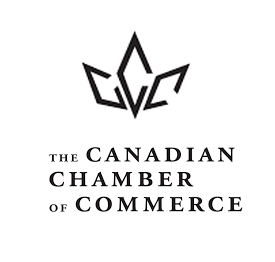
We collect basic website visitor information on this website and store it in cookies. We also utilize Google Analytics to track page view information to assist us in improving our website.
Tariffs and Trade Updates and Information, visit www.chambercheck.ca
|
|
||
|
The ongoing U.S. tariffs situation is widely covered in economic and political headlines, but one of its less-discussed casualties is the human resources (HR) department.
Although HR teams are not directly involved in trade negotiations or tariff enforcement, the consequences of tariff changes are creating an unexpected wave of challenges, from workforce disruptions to morale issues and talent management headaches.
It’s a situation, says Brad Ratz, Director of Growth Strategy and Customer Experience at H2R Business Solutions, has not gone unnoticed by companies like his that provide support to small and mid-sized businesses.
“It definitely shifts you from a proactive stance to a reactive stance as an organization,” says Brad, referring to the ongoing impact of tariffs and how businesses have had to adapt. “But I think in the last few weeks there has been some more stability.”
Tariffs, essentially taxes on imported goods, often lead to higher costs for raw materials, components, and finished products. For industries like manufacturing, automotive, electronics, agriculture, and retail, this has created enormous financial pressure. While executives and supply chain managers scramble to adjust pricing, sourcing, and operations, HR departments are left to manage the human side of the fallout.
Companies facing shrinking profit margins often respond with hiring freezes, layoffs, or restructuring. This leaves HR teams tasked with managing reductions in force, handling severance, conducting difficult conversations, and navigating legal risks—all while maintaining morale among the remaining workforce.
Assessment key for businesses
However, Brad says on the other end of the ‘doom and gloom’ side of the situation there has been an uptake in hiring as many companies capitalize on the ‘buy Canadian’ movement.
“As many companies are being impacted and may be modeling out some worst-case scenarios, we've got on the other side clients that say, ‘How do we even keep up with the amount of work that's being directed to us right now?’” says Brad, adding organizations must really start to think strategically when it comes to planning. “How do we navigate this uptick? Because the question then is how long is this sustainable?”
For companies forced to shift their strategies—such as relocating manufacturing out of tariff-affected countries—HR faces the complex task of redeploying talent. This might involve reskilling workers for new roles, managing transfers, or negotiating with unions. Retraining programs, once seen as long-term development initiatives, have become urgent necessities to keep pace with rapidly changing business needs.
Assessment, says Brad, is key when companies are faced with rapid changes.
“Take that pause and ask some questions and assess the landscape and what's happening. Once you've assessed, then it's time to start planning. What's best case scenario and what's worst case scenario?” he says. “I love the assessment piece because you’re acting off of real data and you're kind of eliminating some of that emotional stuff that's going to come in if you don't stop and do the assessment.”
Managers require support
Another hidden cost of the tariffs situation is employee anxiety. News of supply chain disruptions, rising costs, or customer losses spreads quickly through the workforce. Employees fear for their jobs, speculate about layoffs, and worry about the company’s future. Even if no cuts are made, morale can take a hit, leading to drops in productivity and engagement.
HR teams must invest time in internal communication to reassure employees, manage rumours, and maintain trust. They also need to support managers in having transparent conversations with their teams. In some cases, HR may introduce stress management programs or offer additional mental health resources to help employees cope.
“We've had a significant increase from a training and development side trying to equip leaders to help navigate the changes that are coming through this and support their teams,” says Brad, adding some smaller organizations may already have tools in place to assist. “If you do feel like your team is going to be affected in many different ways, what systems or tools do you already have access and available that can support our staff through this?”
Moving forward, companies need to recognize HR’s critical role in times of economic disruption. This means ensuring that HR leaders have a seat at the table during strategic planning, providing resources for employee support programs, and investing in workforce planning and training. Without this, the toll on morale, retention, and performance may far outlast the tariff wars themselves.
Speaking on a personal note, Brad says despite any shifts caused by tariffs, he is optimistic for the what the economic future holds.
“Canada is one of the largest economies in the world. On a global scale, we’re not small and there's lots of opportunity out there,” he says. “Typically, after any time of crisis, and I would classify this as crisis, that's usually when the largest level of innovation happens.”
Challenges faced by HR departments include:
Job security and layoffs Tariffs can lead to declining demand in certain industries, potentially causing layoffs and hiring freezes. HR must develop strategies for managing workforce reductions while maintaining employee morale.
Reskilling and upskilling As businesses adapt to changing market conditions, including tariff-related shifts in supply chains, HR may need to focus on reskilling employees for new roles.
Employee morale The uncertainty surrounding tariff policies and their potential impact on jobs and the economy can negatively affect employee morale, leading to decreased productivity and engagement.
Compensation and benefits Rising material costs due to tariffs can put pressure on company budgets, potentially requiring HR to adjust compensation structures and benefits packages to remain competitive.
Transparency and communication HR leaders need to be transparent with employees about how tariffs may impact the business and provide support programs to help them navigate the changes.
Impact on healthcare costs Tariffs could also lead to rising pharmaceutical costs, adding to the challenges already faced by HR in managing healthcare inflation, according to Businessolver. |
||
|
||
|
||
|
||
|
|
||
|
The following piece is one of several that appears in the special summer edition of our INSIGHT Magazine celebrating Cambridge’s 50th anniversary as we recognize just a few of the people, businesses and institutions that have made our community great.
As dignitaries gathered for the ground-breaking ceremony of Toyota Motor Corporation’s much anticipated Cambridge assembly plant on May 6, 1986, the Waterloo Record reported that four windsocks painted to look like fish hung outside the tent where officials had gathered.
Called ‘koinobori’ or carp streamer, Toyota Motor Corporation’s late president Dr. Shoichiro Toyoda explained the significance of the gesture, noting the fish is known as one that fights its way, even up a waterfall.
“The carp streamer is used as a symbol of vitality for parents who wish good health and strong development for their children,” he was quoted at the time. “We have hoisted the koinobori here in the hope that our company will grow to become a business appreciated and respected by everyone as a whole.”
Nearly 40 years later, it’s clear this ‘hope’ for success has manifested as Toyota Motor Manufacturing Canada Inc. continues to be a major industry and economic leader, and community partner for Cambridge and southwestern Ontario as a whole.
From the moment the first Corolla rolled off the assembly line at its Cambridge facility shortly before 10 a.m. on Nov. 30, 1988, the company has continually succeeded creating hundreds of new jobs over the years through the expansion of new product lines.
Cambridge was selected from over 40 municipalities in Canada for the plant and federal government incentives were a consideration. Former Cambridge MP Chris Speyer, quoted in an article in the Dec. 12, 1985, edition of the Cambridge Reporter announcing the news, said there were incentives in the contract to encourage Toyota to buy Canadian parts and that the provincial government would contribute $15 million over five years toward a program to train Ontario workers.
“I’m extraordinarily proud of our community that Toyota would choose us to locate such a major enterprise. This is the happiest day of my political career,” he told the Reporter, before describing the “tremendous positive impact” the plant would have on the local economy, noting the average salaries at that time would range from between $25,000 to $30,000.
“Just think of what that means to housing in our area, to shopping and small business as well as the spin-off effect by other industries locating within our area in order to service Toyota,” said Speyer.
The Cambridge plant was expected, in the beginning, to produce 50,000 cars a year with the capacity to reach 100,000 when market conditions permitted, providing work for 1,000 employees.
In a Reporter article published a year before the plant opened, it was reported that a progress report indicated it would provide 1,000 direct manufacturing jobs that would result in another 2,000 new jobs in the automotive and service industry.
To date, TMMC now employs more than 8,500 people across its three production lines in Cambridge and Woodstock. In Cambridge alone, its North and South plants encompass three million square feet on 400 acres located at the corner of Maple Grove Road and Fountain Street North.
The company, which has won numerous awards recognizing it as a ‘top employer’ and ‘greenest employer’, continues to thrive and evolve.
In August of last year, it marked a special anniversary when a red Lexus NX 350h hybrid electric luxury SUV, rolled off the line in Cambridge representing the 10th million vehicle produced by TMMC.
“Today’s milestone speaks to how far Toyota’s manufacturing operations in Canada have come over the past three decades,” said TMMC President Frank Voss in a press release at the time. “In 1988, the year we opened our first plant in Cambridge, our team members built 153 Toyota Corollas and it took over 11 years to produce our first 11 million vehicles. Today, we’re Canada’s largest automaker and leading maker of electrified vehicles, building half a million Toyota and Lexus vehicles for the North American market every year. Our world-class team members have been trusted to build some of the most popular vehicles in North America and that’s something we’re very proud of.”
|
||
|
||
|
||
|
||
|
|
||
|
Working from home has become the norm for thousands of people since the start of the pandemic and many may wish to continue that practice.
However, the question of work location is just one of many items on a growing list of work-related issues that are likely to capture additional attention as more of us are vaccinated lowering the risk of the spread of COVID-19, allowing employers to begin to try to get back to “normal”.
“A key issue right now is for employers to review their employment contracts and policies,” urges Melissa Roth, a human resources, labour and employment lawyer at Pavey Law LLP in Cambridge. “It’s a very worthwhile investment.”
She says changes in general, with respect to termination provisions, as well as changes brought about since the initial shutdown in March 2020 caused by the COVID-19 pandemic, have made it imperative for employers to revisit their employment contracts and policies.
“At first we didn’t have any plans for this in terms of a structure for what was going to happen when businesses were closed,” she says, referring to the laws that were in place in accordance with the Employment Standards Act, 2000 (ESA) at the time of the first lockdown. “At the end of the day, when you lay off someone you are terminating their position if you do not recall them back to work after a specific period of time.”
She says the introduction of the deemed Infectious Disease Emergency Leave (IDEL) changed that from an ESA perspective, allowing those temporarily laid off under the ESA due to COVID-19 to be classified as being on a job protected leave.
“But if you didn’t have that right reserved in your employment contract, then this is still known as a constructive dismissal in the courts,” says Melissa, noting many employers are now facing potential legal claims from employees.
As well, the continued ability to work from home, like other aspects of the working relationship, is a function of the individual’s employment contract, job duties and other factors.
“You, as an employee might be excited about continuing to work from home and may want to keep doing that but if the employer tells you that you have to come back to work, you likely have to come back,” she says, adding employees, under certain circumstances, may be able to request to continue working remotely based on protected grounds under the Human Rights Code. These requests could centre around disabilities or family issues, such as children being too young to be left at home alone since changes to the Education Act have permitted parents to keep their children out of schools.
“There are a lot of factors that play a role in a request to stay home and continue to work from home,” says Melissa, adding if there are no human rights grounds to remain home and it was not written into the contract, there is likely an expected obligation that an employee will return to the workplace. “There’s a lot to consider and the answer is never a black and white issue.”
She says some employers already had telecommuting policies in their work contracts because working remotely was already part of their regular business, but that even these policies may need updating.
“As an employer, you are going to have to consider if it is essential for your employee working at home to be available during core hours or whether they can make up their time throughout the day,” says Melissa. “In turn, the employee will have to know what the expectations are when working from home.”
As well, she says the Occupational Health and Safety Act and WSIB concerns have to be taken into consideration when assessing the possibilities of continuing to work from home.
“A person may be working from home and an employer still has certain obligations to take every precaution that’s reasonable under the circumstances for the protection of their worker,” says Melissa. “All of these issues have to be taken into consideration.”
She also encourages these considerations be included in the contracts of new hires and in employment policies.
Melissa mentioned that employers should turn their minds to other issues such as rapid testing and vaccination policies as they pertain to the workplace.
“You should have this in writing,” says Melissa, noting businesses should provide their employees with clear messaging and embrace this time as the opportunity to update their policies and contracts. “I’m just speculating, but the next pandemic is likely not going to take 100 years so let’s be prepared for this to happen.”
For more, visit: https://bit.ly/3hnBb0b |
||
|
||
|
||
|
||
|

|
|
Brian Rodnick 247 June 5, 2025 |

|
|
Greg Durocher 41 July 28, 2023 |

|
|
Canadian Chamber of Commerce 24 January 29, 2021 |

|
|
Cambridge Chamber 2 March 27, 2020 |